Endangered Iguana
Little studied and greatly misunderstood, the Nicaraguan Spiny-tailed Iguana (Ctenosaura quinquecarinata) is a focus species for Lost Canyon and is now thriving inside the reserve.

Little studied and greatly misunderstood, the Nicaraguan Spiny-tailed Iguana (Ctenosaura quinquecarinata) is a focus species for Lost Canyon and is now thriving inside the reserve.

Lost Canyon Nature Reserve is a private wildlife refuge dedicated to conservation and restoration of tropical dry forest flora & fauna, with emphasis on the Nicaraguan Spiny-tailed Iguana (C. quinquecarinata).
Conservation and restoration of one of the world’s most endangered ecosystems, through native tree reforestation, along with management and protection of natural regrowth.
Little studied and greatly misunderstood, the Nicaraguan Spiny-tailed Iguana (Ctenosaura quinquecarinata) is a focus species for Lost Canyon and now thriving inside the reserve.
As a part of Lake Managua’s northern watershed, Lost Canyon is working hard to protect and revive streams and creeks under severe pressure from deforestation and climate change.
Nicaragua’s biodiversity is of world importance and its dry forest fauna is an indispensable part of that biodiversity. Lost Canyon was created to research and protect this critical wildlife.
Lost Canyon Nature Reserve is open only to biologists and other specialists for scientific research. Please contact us for an appointment. We hope to reopen to the general public in 2025.
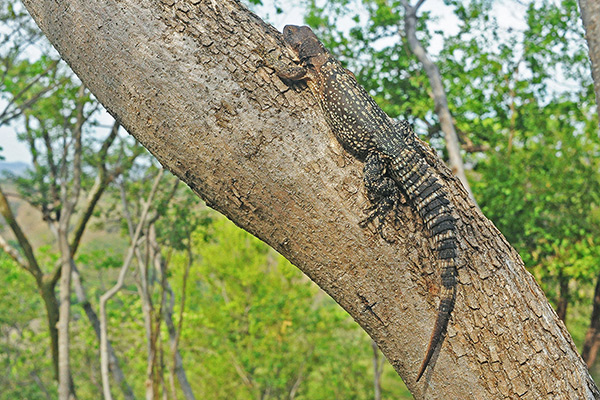
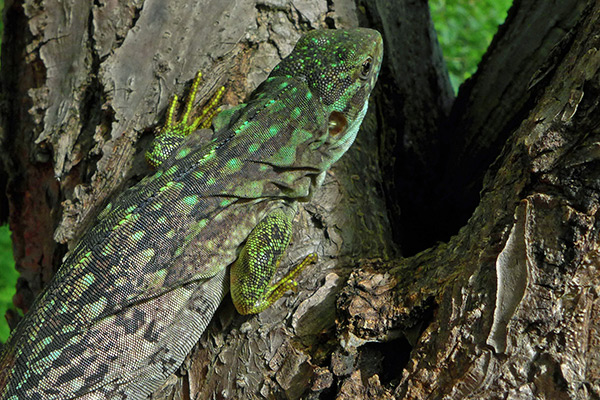
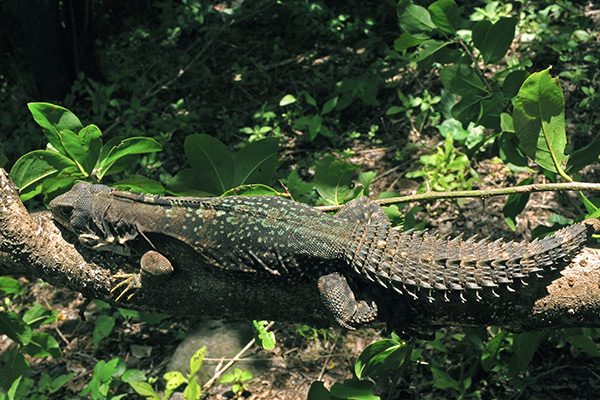
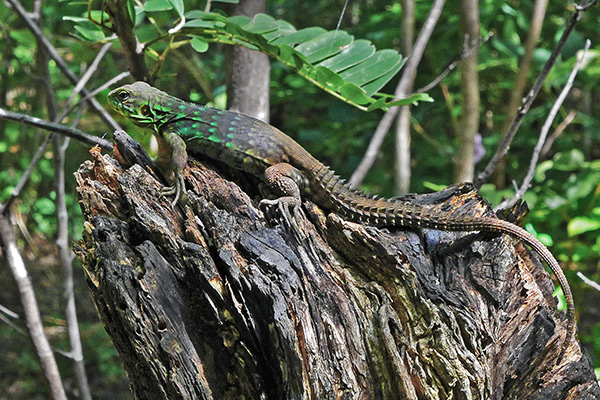
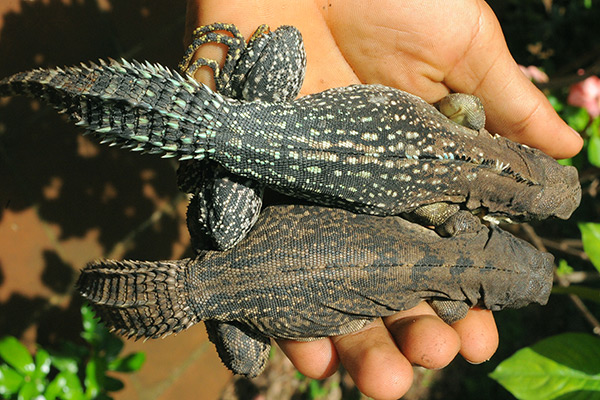
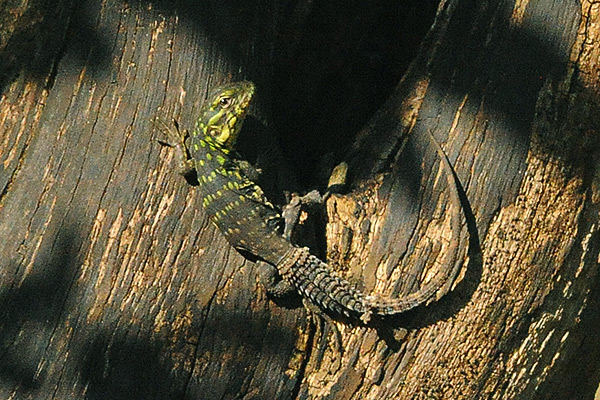
The Lost Canyon Nature Reserve is a critical habitat for endangered species. A pertinent example is the Nicaraguan Spiny-tailed Iguana (Ctenosaura quinquecarinata), a rare and nearly unstudied reptile, native to a dwindling number of patches of tropical dry forest in Nicaragua’s central mountains and along both sides of Nicaragua’s southwestern border with Costa Rica.
The C. quinquecarinata is classified in the IUCN Red List of Threatened Species as “Endangered”. According to the IUCN Red List, the Nicaraguan Spiny-tailed Iguana has been reduced “to less 2,500 mature individuals” and laments that it “is not currently under any legal protection.” The Red List reports that the remaining C. quinquecarinata “population is fragmented into 10-15 isolated subpopulations” and warns that “the population is expected to decline by at least 30% in the next ten years if current rates of habitat loss continue.” Since Lost Canyon Nature Reserve is a vital habitat for the Nicaraguan Spiny-tailed Iguana, conservation and scientific investigation of the species is a top priority. As the reserve’s flagship species, the Ctenosaura quinquecarinata underlines Lost Canyon’s worldwide importance as a conservation site, one that offers scientists the opportunity to study this rare iguana and donors/visitors the chance to help protect it.
This rare iguana is known to biologists as the Five-keeled Spiny-Tailed Iguana (an English translation of its scientific name), Cola Chata in Spanish and to pet traders as the Club-tailed Iguana. We understand the importance of popular names for effective conservation and promote a geographically-logic name for the species, to avoid confusion and help define its principle range. That is the reasoning for our use of Nicaraguan Spiny-tailed Iguana.
Despite having diverse natural predators, the biggest danger to the Nicaraguan Spiny-tailed Iguana’s continued existence is the destruction of its tropical dry forest habitat by humans. However, habitat loss is just the beginning, since the Nicaraguan Spiny-tailed Iguana only lives in the cavities of dried tree trunks and branches, its survival challenges are multiplied. Nicaraguan cattle ranchers and farmers set fire to their land twice annually to regenerate pasture and prior to crop planting; biannually burning already occupied and potential Ctenosaura quinquecarinata refuge sites. What’s worse, more than 90% of the Nicaraguan campesinos cook using fire wood. So even if the C. quinquecarinata is fortunate enough to survive natural predators, deforestation and intentional fires, its refuge may still be destroyed by the most responsible of farmers, ones that instead of burning or clear-cutting forest, remove only dried branches and trunks for use as cooking fuel. This reality has created a housing crisis of dramatic proportions for the Nicaraguan Spiny-tailed Iguana. In desperation, the endangered reptile has adapted to finding refuge in wooden fence-post cavities, a major lifestyle change from living in the forest canopy, where foliage and body camouflage help protect the Nicaraguan Spiny-tailed Iguana from natural predators. Not only does the exposure of fence-post dwelling make them exponentially vulnerable to natural and man-made threats, but many Nicaraguans erroneously believe the Ctenosaura quinquecarinata to be venomous and kill the reptile on sight if encountered in fence posts.
To help mitigate widespread habitat destruction, insure local survival of the species and facilitate scientific investigation of this rare iguana, the Lost Canyon Nature Reserve began a non-mating season Ctenosaura quinquecarinata translocation program in 2009, called the Nicaragua Iguana Project (NIP). Nicaraguan Spiny-tailed Iguanas encountered sheltering in fence-posts outside reserve limits are relocated (while still inside fence-post) to the NIP focus area, to assure their immediate survival, facilitate mating and permit herpetologists to learn more about this seldom studied reptile. Cooperating area ranchers, who willingly part with an iguana-inhabited fence-post, receive a fresh post installed same-day by Lost Canyon park rangers. Non-fence-post-dwelling Ctenosaura quinquecarinata living in high-risk areas are also relocated into the NIP’s conservation area (where ample natural shelters exist), through NIP’s capture and release program.